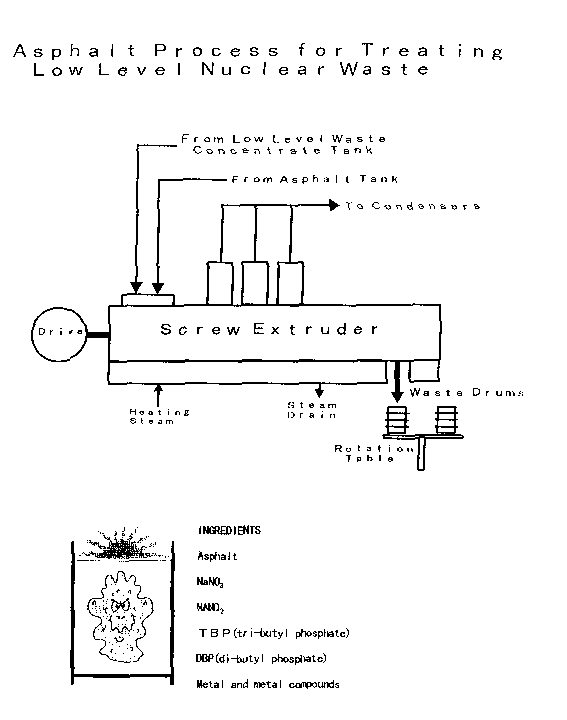Case 2: Fire and Explosion at Bituminization Demonstration Facility in 1997
Case 2 of Teaching Case Studies of Accidents in Nuclear Energy Development in Japan describes an explosion at Tokai Works of PNC, located in Tokaimura, 140km north of Tokyo.
This case is an excerpt from Three Teaching Case Studies of Accidents in Nuclear Energy Development in Japan.
The second accident occurred 14 months after the first one at Tokai Works of PNC, located in Tokaimura, 140 km north of Tokyo. The facility mixes a low radioactive nuclear wastewater with molten bitumen and evaporates water in a steam-heated extruder at 180 and pours the molten mixture into steel drums (180 liters) to cool down, as illustrated in Fig. 4. Since the waste contains a high percentage of sodium nitrate, a strong oxidation reagent, and bitumen and other organic chemicals, the mixture is likely to initiate oxidation reaction by itself at high temperature. Because of the risk, reagents to retard the oxidation reaction were investigated before the process started operation in 1982.
Figure 4:
Engineers planned an experiment to reduce a flow rate by 10% then 20%. Operators from subcontractors observed lowering viscosity of the final mixture, an indication of higher temperature but the thermometer at the exit of the extruder was not working well for years. When they saw pillars of flame on the drums being cooled down, they splashed water from sprinklers for one minute just enough to extinguish the fire. They reported to the engineers. No engineer responsible to the operation came to the place before an explosion occurred 10 hours later and a small amount of radioactive materials went out of the building. Several tens of workers had been scheduled to enter the building 40minutes after the explosion. It was very fortunate that there were no casualties. I think ordinary engineers could have foreseen the explosion if they had understood what caused the original fire and time necessary to cool down the oxidation reaction in the 180 liter drums. This case can be used to caution the students against the following mistakes:
- Incompetent and inexperienced behavior by the engineers (stationed at dirty, difficult, unimportant, and unhealthy working environment),
- Careless experimental design,
- Negligence in watching and examining the experiment,
- Dereliction of the engineers' responsibility of checking and controlling workers' safety and the floor after the fire,
- Some engineers become a kind of managers who do not want to know and do not know what is going on the operating floor.
- No accident for 15 years made them smug and think the operation is completely safe, although there was a similar accident in Belgium
- Delay in informing community agencies about the accident.
6. and 7. are common to the first and second accidents.
PNC in charge of both operations was reorganized into JNC (Japan Nuclear Cycle Development Corp) because of the two accidents and their poor handling of the situations despite their thirty years of substantial technical achievements.
Author: Hiroshi Iino, Kanazawa Institute of Technology, Japan.
Presented at the OEC International Conference on Ethics in Engineering and Computer Science, March 1999.


